Yet you’ll also find my favorite vein of licensed NES games: the ones based on things so obscure that most of us weren’t aware of them. We assumed we were playing games just as original as Super Mario Bros. or Ninja Gaiden, and we didn’t learn the truth behind the licenses until years down the road.
BARKER BILL’S TRICK SHOOTING
(Nintendo, 1989)
Nintendo seldom bothered with games drawn from movies or TV shows. There was no point, not when Mario was bigger than Mickey Mouse by 1989. Granted, they could’ve licensed nearly anything; countless companies would’ve been eager to have the most powerful force in video games backing a tie-in for a movie or comic or TV series. And so, with the wide vista of the entertainment industry pretty much theirs for the taking, Nintendo apparently chose…an obscure 1950s cartoon mascot called Barker Bill.
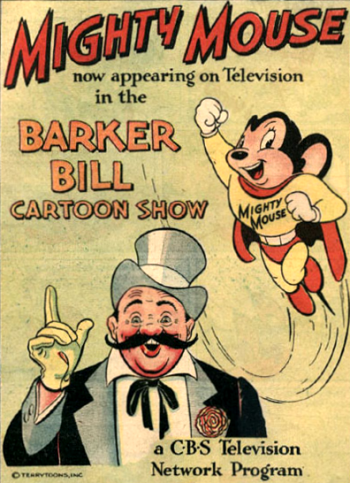
Barker Bill’s Cartoon Show was a collection of black-and-white shorts hosted by a mustachioed ringmaster, and it’s remembered mostly for pioneering afternoon cartoons for children from 1953 to 1955. Barker Bill had a TV show and a short-lived comic strip, but his star fell a good three decades before the NES even launched in North America.
Nintendo didn’t put their best squad on Barker Bill’s Trick Shooting, but it’s not a terrible game. Bill and his assistant Trixie (who appears to be invented just for the NES) are pleasantly animated hosts of a gallery of targets, and the title screen even has them stage a trick shot and then run for their lives when the logo crashes down. There’s also a dog that pops up throughout the levels, snickering at missed shots and cementing the game as a spiritual follow-up to Duck Hunt.
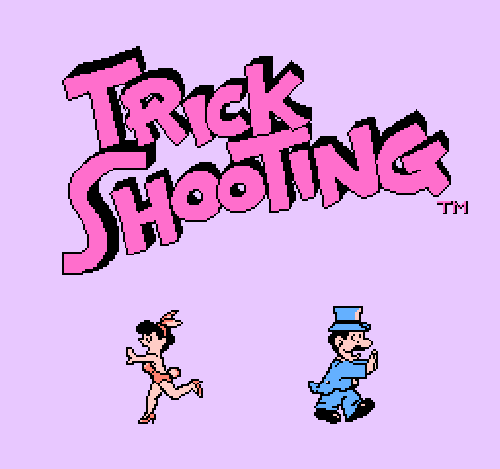
Barker Bill’s Trick Shooting is obscure even among NES games designed to use the Zapper light-gun, and it leaves behind a mystery. Why did Nintendo license Barker Bill of all things? Was it a childhood favorite of someone high up in the company’s American branch? Was Barker Bill one of those TV shows with an unexpectedly huge following in Japan, like Hanna-Barbera’s Wacky Races? Barker Bill was never released in Japan, so I’d guess not.
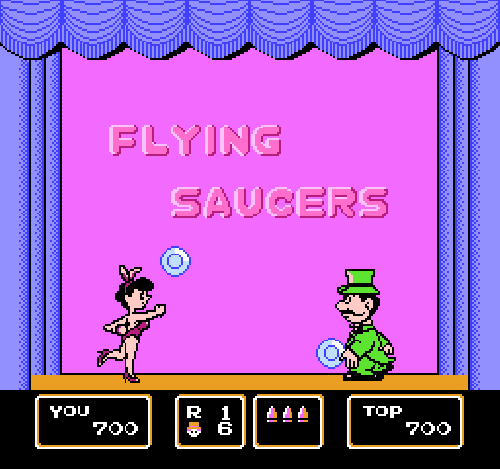
Or was Barker Bill’s Trick Shooting not even a licensed game at all? Only Nintendo’s copyright appears on the game’s box and title screen, inviting speculation that Nintendo just invented this particular Barker Bill by convergent evolution and that no one cared enough to mount a lawsuit. Or perhaps Barker Bill was in the public domain by the 1980s and no one cared enough to fight Nintendo over him.
DESTINY OF AN EMPEROR
(Capcom, 1990)
Games based on anime and manga often disguised themselves in North America. True, you’d see Vic Tokai’s original Golgo 13 game pushing the manga openly, while Electro Brain’s Puss ‘N Boots informed you right on the box that its protagonist Pero was “an original character of Toei Animation.” Yet other games lost all anime trappings: Gegege no Kitaro became Ninja Kid, Obake no Q-Taro became Chubby Cherub, and Dragon Ball became Dragon Power all under Bandai’s watch.
With Destiny of an Emperor, however, Capcom disguised nothing and still slipped a manga property past unwary NES owners of the day.
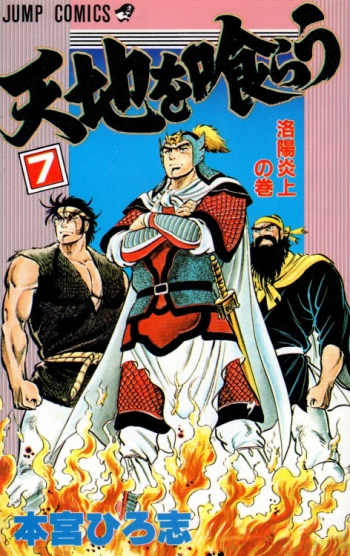
Astute manga fans might have recognized the signs of a licensed game in Destiny of an Emperor: the title screen has copyrights for Hiroshi Motomiya and Shueisha, as it’s based on Motomiya’s Tenchi wo Kurau manga. The character portraits and cutscenes also show a distinct style beyond what you’d typically see in an NES game with no manga connections.
Yet most of the RPG fans who dug into Destiny of an Emperor thought nothing of these hints. They just assumed that they were playing another game based on the historical epic Romance of the Three Kingdoms, and that Capcom’s take on the story was no more inspired by manga than Koei’s similar titles.
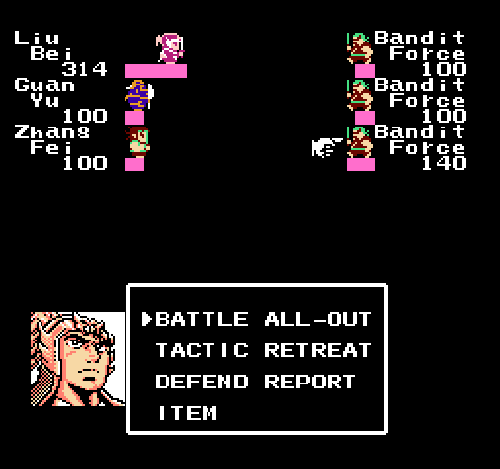
Destiny of an Emperor isn’t a typical RPG, at least. Liu Bei and his companions wander around an ancient China in the fashion of Dragon Quest, but the battles they fight are abstractions of wide-scale clashes, and the heroes deplete enemy squads’ soldiers instead of hit points. Defeated generals can join the player’s cause, leading to a party well past 100 members. The music is also grand and catchy, but isn’t that true of every Capcom NES game?
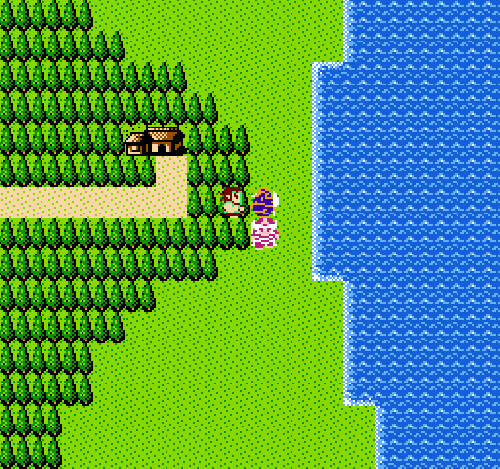
Capcom got plenty of mileage from licensing Tenchi wo Kurau, as the series also inspired several arcade beat-‘em-ups. These were reworked as Warriors of Fate for American players, complete with name changes. Destiny of an Emperor stayed more faithful to its source material and kept the majority of the original names. Not that many of us noticed such fidelity at the time.
ROLLERGAMES
(Konami/Ultra, 1990)
Rollergames was a daring hybrid: a TV series that blended roller derby with the scripted rivalries and melodrama of pro wrestling. It was only around for one season in 1990, overshadowed by American Gladiators and actual wrestling shows, but that was long enough for Konami to make two games, an arcade outing and an NES release.
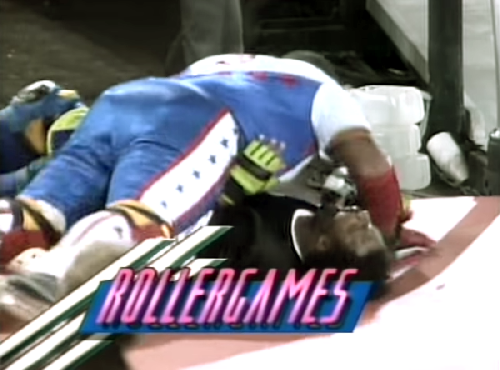
The arcade Rollergames sticks to brawlsome roller rinks, but the NES game finds much more ambitious terrain. The show’s evil roller teams kidnap the organization’s CEO, leaving the three upstanding cadres of the T-Birds, Hot Flash, and Rockers to rescue him. Assuming the standard roles of Tough Guy, Fast Woman, and Balanced Guy, our heroes skate through crumbing neighborhoods, pit-filled highways, deadly swamps, and the obligatory final stage full of spikes and precarious platforms. The game divides itself between obstacle courses and Double Dragon street fights, with no roller derby rinks to be seen beyond the introduction.
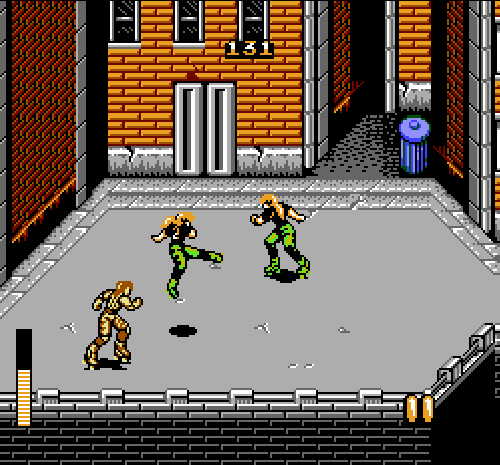
Rollergames adopts a deliberately loose control scheme, giving players the authentically frustrating experience of leaping over pits and dodging explosives while on a pair of roller skates. That said, there’s a pleasant variety in the game’s mix of brawler and platformer, and it’s sewn up with a fantastic Konami soundtrack and a unique patina of day-glo ‘80s grandeur. By the way, if anyone makes a joke about how the heroine is called “Hot Flash,” you tell them that’s the name of the team and that the character is known as Rolling Thunder, thank you very much.
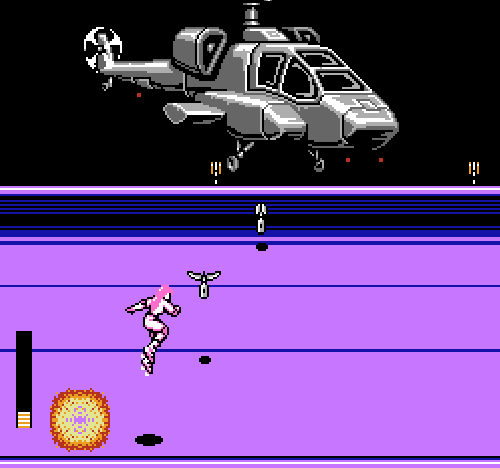
It was very easy to mistake Rollergames for an original Konami creation. The box copy doesn’t mention any TV tie-ins, and Nintendo Power’s spread has no such elaboration. By the time the game arrived in late 1990, the TV show had slipped off the air and out of any kid’s pop-culture radius.
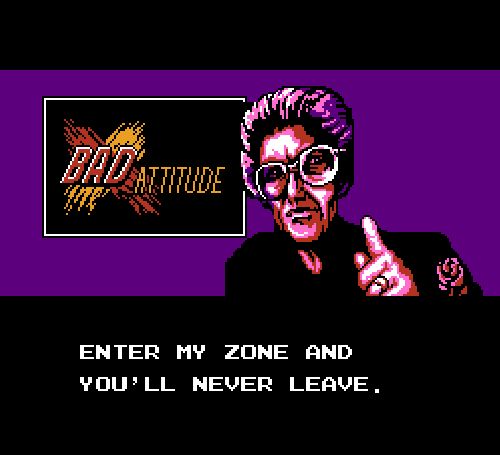
Those kids didn’t realize that just about every character, from the opening announcers to the level bosses, was someone from the TV show. This would’ve explained why the first stage’s antagonist looks less like a gang leader and more like an irate grandmother complaining to her local newspaper about miniskirts, rap music, and the general decline of Murder, She Wrote.
Only the curiously misshapen final boss appears to be devised just for the NES game, and it’s enough to make one wish that Konami had gone even weirder in the game’s later levels. Even so, their take on Rollergames might be the most enduring piece of the whole project. Detached from its inspiration, it’s still an upbeat, challenging spread of late 1980s errata. Where else would a pink-haired skate-warrior take on attack helicopters and jet-ski marauders? Nowhere else but Rollergames.

No comments:
Post a Comment